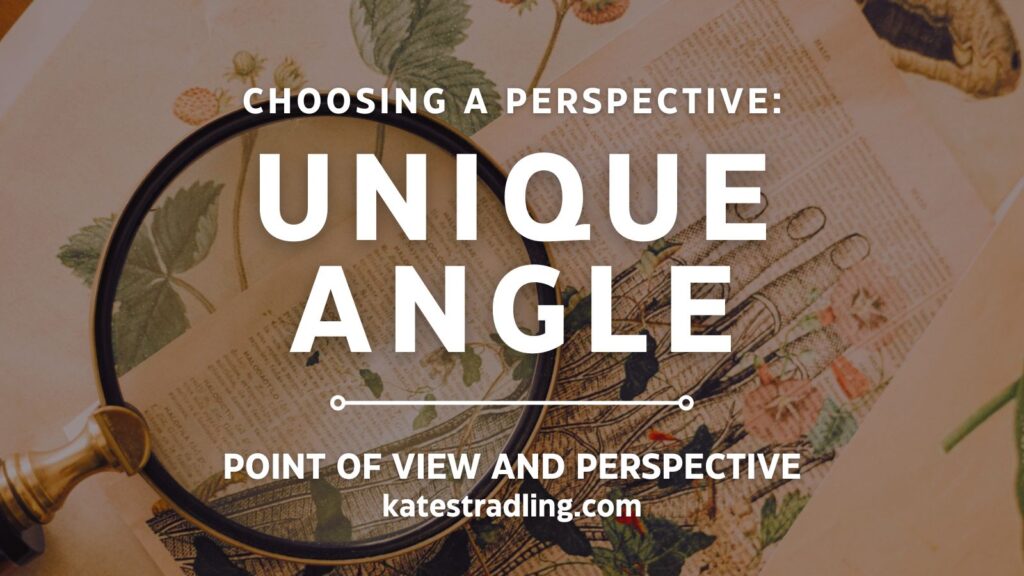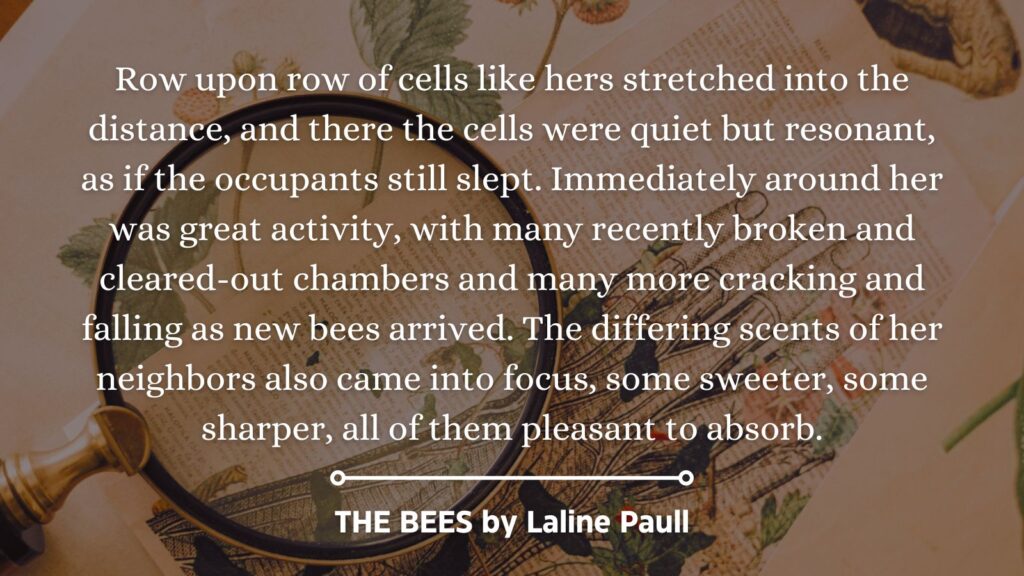For our third consideration in Choosing a Perspective, a story’s Viewpoint Character should have a Unique Angle for recounting plot events.

This brings us the following questions:
- How does the story differ if told by Character A versus Character B (C, D, etc.)?
- How does this character’s perception affect the genre? The narration style? The plot progression? How does it benefit the story?
Case in Point
In the myth of Hades and Persephone, the god of the Underworld kidnaps the goddess of Spring and take her to his realm to be his wife. Aboveground, her mother, goddess of Harvest, becomes distraught, plunging the world into winter and famine, until the higher gods of Olympus arrange for Persephone’s return. But during her stay in the underworld, she ate six pomegranate seeds, which gives Hades claim to her. By consensus of the gods, Persephone must spend six months above ground and six months beneath, thereby fueling an endless cycle of seasons in the world.
This myth has received numerous retellings in recent years, and it’s a lovely example for our Unique Angle considerations.
Unique Angle A
If told from Hades’ perspective, the story must touch on, among other things, a justification for kidnapping, the loneliness of the King of the Underworld, the yearning for new life and new growth that Persephone represents.
Unique Angle B
From Persephone’s perspective, we get the fear of a kidnapping victim, the wonder of a newcomer in a strange land, as well as growth of understanding and compassion for a misunderstood antihero.
Both of these perspectives play nicely in a romance genre with the stolen bride motif. But consider
Unique Angle C
If you tell this story from Demeter’s perspective (which no one ever does), it becomes the tale of a devoted mother trying to free her kidnapped daughter and bring her home. No longer a romance, but a mystery, crime, or thriller, depending on how much she knows about who took her child.
Choosing a Unique Angle can breathe new life into ancient tropes and story patterns. Reviewing the possible unique angles for any story can also reveal character motivations and sympathies. This process allows creation of Viewpoint Characters who are more than simple avatars for the Reader. Such characters live according to their own logic, ethics, and desires.
And of course, no discussion of Unique Angles would be complete without a tangent into…
Xenofiction
This term (xeno- “strange, foreign” + fiction) refers to stories told from a non-human perspective. Although typically associated with science fiction and fantasy, it is not exclusive to those genres. Xenofiction includes works with Viewpoint Characters that are Animals, Humanoid Races, Divine Beings, Aliens, and Inanimate Objects.
Some examples (with Viewpoint Characters):
- WATERSHIP DOWN by Richard Adams (a rabbit colony)
- THE HOBBIT by J. R. R. Tolkien (a hobbit)
- THE BOOK THIEF by Markus Zusak (Death incarnate)
- ALL SYSTEMS RED by Martha Wells (a robot)
- “The Velveteen Rabbit” by Margery Williams (a toy)
The Rule of Thumb for identifying xenofiction is that the non-human perspective must be an essential component of the story. If you can replace the non-human Viewpoint Character with a human (perhaps a super-powered human) and the story doesn’t significantly change, it’s not xenofiction.
For example, Disney’s ROBIN HOOD, where all the characters are animals, would not qualify as xenofiction because they don’t have to be animals, they just happen to be. The story would be essentially the same if they were human. In contrast, Pixar’s TOY STORY would lose its entire premise if the toys were humans instead.
A Broadened Viewpoint
Stories from non-human perspectives broaden our understanding of ourselves and the world around us. They provide an avenue for allegories, metaphors, and philosophical discussions. They also enable us to contemplate the ordinary from a fresh angle.
One prominent literary technique in this endeavor is de-familiarization. This process, as its name implies, presents familiar objects or situations as though they are unfamiliar, newly encountered.
For example, in his novella KHOLSTOMER: THE STORY OF A HORSE, Leo Tolstoy de-familiarizes possessive pronouns to challenge the idea of personal property and how humans claim ownership over the natural world. Through the eyes of a horse, he paints materialism as shallow and absurd.

Laline Paull’s THE BEES describes the comb structure of a beehive as a prison-like expanse of cells. This austere imagery reinforces the strict social order that governs the hive occupants. It also invokes a dystopian aesthetic, expanding the novel’s themes beyond its apian subjects.

And, if you’ve ever encountered the “humans are space orcs” trope online, that is a long-running string of de-familiarization examples. (Obligatory language warning if you choose to dive into that rabbit hole.)
De-familiarization unlocks opportunities for deep self-reflection, moving beyond things as we perceive them to challenge why we perceive them that way.
If you’re writing xenofiction, consider these questions:
- How does the world differ when viewed from this alternate perspective?
- What things familiar to us might seem strange? How?
- What senses would this perspective include that a human perspective might omit, and vice versa?
Conclusion
Choosing a perspective with a Unique Angle can create a sense of intrigue, newness, or wonder.
Up next: Likeability
Previous: Desired Proximity
Index Page: Point of View
I once wrote a xenofiction fanfiction story! I rewrote the scary kitchen scene from Jurassic Park from the raptors’ point of view. I was so proud of the fact that the everyone who read it felt sorry for the raptors at the end, despite the fact that they are such a terrifying enemy in the movie scene!
I love that. From their perspective, it’s a whole different story!
Comments are closed.